Expert Tips for Selecting the Perfect Herbs for Aromatherapy
How to Use Herbs in Aromatherapy: When embarking on aromatherapy, it is essential to make informed choices about the right herbs. Each herb carries distinct properties and effects that can significantly enhance your overall aromatherapy experience. By selecting wisely, you can cultivate a profound impact on your mental and physical well-being, allowing you to harness the full potential of nature’s gifts.
Exploring the Therapeutic Properties of Different Herbs

The therapeutic properties of herbs are remarkably diverse, and understanding these nuances is crucial to achieving effective aromatherapy outcomes. For example, lavender's soothing and calming effects make it an excellent choice for individuals seeking relief from stress or looking to improve their sleep quality. Conversely, peppermint is known for its invigorating properties, enhancing focus and concentration, making it ideal for daytime use or during productive work sessions.
When choosing herbs, it is important to consider your specific ailments or desired outcomes. For instance, if you aim for anxiety relief, herbs such as chamomile or lemon balm might be suitable options, while eucalyptus is highly effective for respiratory support. Conducting thorough research into the chemical constituents of these herbs, including terpenes and flavonoids, can provide valuable insights into their effects. Numerous resources and studies elaborate on how these specific components influence physiological responses, empowering you with the knowledge to tailor your selections to your needs.
Moreover, personal preferences play a significant role in your herb selection. Aromatic scents can trigger memories or evoke strong emotions, making it vital to choose fragrances that resonate with you. Keeping a detailed record of your impressions of different herb aromas can significantly assist in guiding future selections and enrich your overall aromatherapy practice.
How to Source High-Quality Herbs for Aromatherapy
Sourcing high-quality herbs is imperative to maximising the benefits of your aromatherapy sessions. Not all herbs are of equal quality; their potency and efficacy can vary greatly based on factors such as cultivation methods, harvesting times, and handling procedures. Always seek suppliers who offer organic certification or those who practice sustainable farming methods, ensuring that you are investing in the best-quality products.
Local herbalists and farmers' markets often provide fresh herbs that may be more potent than dried ones. While online sources can be beneficial, verifying their reputation through positive reviews and consistent quality is crucial. Some reputable brands even provide lab results to confirm the purity and potency of their products, which can instil additional confidence in your choices.
Understanding the origin of your herbs is equally important. Herbs cultivated in their native environments typically boast richer profiles and more robust therapeutic qualities. Engaging with suppliers offering comprehensive information about their sourcing practices can deepen your connection to the herbs, enhancing your aromatherapy experience.
Creating Effective Herb Combinations for Enhanced Benefits
Crafting synergistic blends of herbs can significantly amplify their therapeutic effects. Certain herbs naturally complement one another, enhancing their benefits. For instance, combining eucalyptus with rosemary supports respiratory function and stimulates mental clarity, making it an ideal combination for workspaces or study environments.
When formulating combinations, it is essential to consider the balance of aromas and therapeutic properties. A well-rounded blend may include a base note, such as cedarwood, which grounds the fragrance, complemented by middle notes like ylang-ylang for floral sweetness and uplifting top notes such as citrus for a refreshing lift. Experimentation is key; begin with small quantities to assess the effects before committing to larger batches.
Researching traditional herbal practices can inspire unique combinations. Many cultures have a long history of using specific herbs together for enhanced healing, and tapping into this ancestral wisdom can yield remarkable blends tailored to your unique needs.
Essential Techniques for Preparing Herbal Oils

Preparing herbal oils is a critical step in mastering aromatherapy. This process allows you to extract herbs' beneficial properties, transforming them into a potent and versatile form that can be used in various applications.
Mastering Infusion Techniques for Herbal Oils
Developing the skill of infusing herbs into carrier oils can greatly enhance your aromatherapy practice. Two primary methods of infusion include hot infusion and solar infusion. The hot infusion technique entails gently heating the carrier oil with herbs, accelerating the extraction process. It is vital to monitor the temperature closely, as overheating can destroy the delicate properties of the herbs. Typically, this method requires several hours of heating and then straining the mixture to separate the herbs from the oil.
On the other hand, solar infusion is a more time-consuming yet gentler method. You place herbs in oil and expose them to sunlight for several weeks. The sun's warmth gradually extracts the herbs' beneficial properties, resulting in a fragrant and potent oil. This method not only preserves volatile compounds but also fosters a deeper connection with nature's rhythms.
Regardless of your chosen method, ensuring your workspace is clean and your containers are sterilised to prevent contamination is essential. Using dark glass bottles can further help preserve the quality of your infused oils by shielding them from light degradation.
Understanding Essential Oil Extraction for Enhanced Blends
Grasping essential oil extraction methods is vital for creating powerful aromatherapy blends. Two prevalent techniques—steam distillation and cold pressing—effectively extract essential oils from various herbs.
Steam distillation is widely regarded in the industry. Steam passes through plant material, causing the essential oils to evaporate and subsequently condense into a liquid form. This method preserves a high percentage of the herb's beneficial compounds, making it a preferred choice for many essential oils.
Cold pressing is primarily used for citrus oils. The oil is mechanically extracted from the fruit's rind without the application of heat. This technique retains the fruit's vibrant scent and fresh properties, providing a lively addition to any aromatherapy blend.
Delving into these extraction processes can profoundly enhance your understanding of the oils you use in your practice, enabling better selection based on desired effects and applications.
Essential Tips for Oil Storage and Preservation
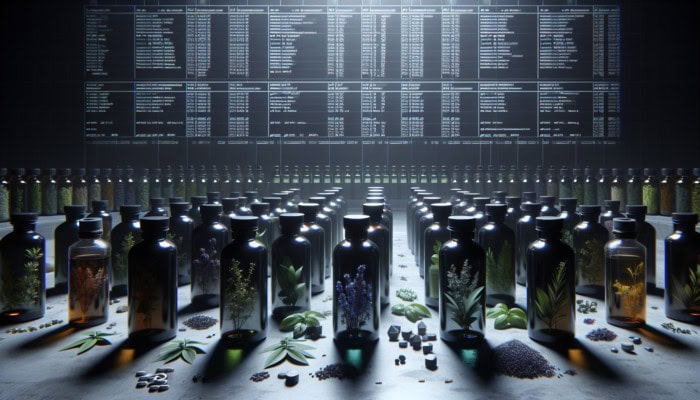
Proper storage and preservation of your herbal oils are crucial for maintaining their potency and extending their shelf life. While essential oils are powerful, they can degrade when exposed to light, heat, or air. Always store your oils in dark glass bottles to shield them from light, and keep them in a cool, dark environment.
It is also important to regularly check for any changes in colour, scent, or consistency, as these can indicate degradation. If you notice any changes, it may be time to discard the oil. Labelling your oils with the date of preparation can assist in tracking their freshness and potency over time.
In addition to choosing suitable containers, consider adding antioxidant substances, such as Vitamin E oil, to your mixtures. This can help prevent oxidation, prolong the life of the oils, and ensure you continue to benefit fully from your aromatherapy sessions.
Choosing Optimal Herbs for Oil Infusion
Selecting the right herbs for oil infusion is crucial for achieving optimal results. Certain herbs have a natural oil content and therapeutic benefits that make them well-suited for oil extraction. For instance, herbs like calendula and hypericum excel in skin-care applications, providing soothing and healing properties that nurture the skin.
When considering your herb choices, reflect on their scent profiles and how they will blend with your selected carrier oils. For example, robust herbs like rosemary or thyme may perform best with a lighter carrier oil, such as grapeseed or sweet almond oil, which allows their active ingredients to shine without being overshadowed.
Experimenting with various herbs and deepening your understanding of their properties will equip you with the knowledge necessary to create herbal oils that cater to your specific needs, making your aromatherapy experience richer and more personalised.
Effective Aromatherapy Methods for Maximum Impact
Once you have prepared your herbal oils, employing effective aromatherapy methods is key to utilising them to their fullest potential and enhancing your overall experience.
Maximising the Use of Diffusers for Aromatic Bliss
Using a diffuser is one of the most popular and effective methods for dispersing the delightful aromas of herbal oils throughout a room. Diffusers break the oils into smaller particles and allow them to permeate the air, creating a fragrant environment that uplifts moods or promotes relaxation.
When using a diffuser, consider the room's size and the oil's strength. A few drops of oil may suffice for smaller spaces, while larger areas might require a more generous amount. Blending different herbal oils can create unique scent profiles explicitly tailored to your mood or the atmosphere you wish to create.
Regular cleaning of your diffuser is essential for maintaining the device's longevity and preserving the purity of the scents. Residual oil can affect the aroma of subsequent blends, so it is important to follow the manufacturer’s guidelines on cleaning methods diligently.
Topical Application of Herbal Oils for Targeted Relief
Topical application of herbal oils offers targeted relief for various conditions, ranging from muscle aches to skin irritations. However, safety remains paramount. Essential oils should always be diluted in a carrier oil before application to the skin. A general rule of thumb is maintaining a 1-2% dilution for adults, with even lower concentrations recommended for children or individuals with sensitive skin.
Identify specific areas of concern when topically applying herbal oils. For example, if you are experiencing tension headaches, consider using a diluted blend of peppermint oil on your temples. The cooling sensation can provide immediate relief, while the aroma enhances relaxation and calm.
Always conduct a patch test to check for potential allergic reactions before applying a new blend to larger skin areas. Monitoring your skin's reaction can safeguard against any adverse effects and ensure a positive experience with your aromatherapy practice.
Utilising Inhalation Techniques for Immediate Benefits
Inhalation methods offer another effective way to experience the benefits of herbal aromas. Steam inhalation is a popular technique for addressing respiratory issues. Adding a few drops of eucalyptus or tea tree oil to a bowl of hot water can create a soothing steam inhalation session. The steam helps to clear nasal passages and allows for the deep inhalation of the beneficial properties of the oils.
Another method is direct inhalation, where you place a drop of essential oil on a cotton ball or tissue and inhale the aroma deeply. This technique proves particularly effective for quick relief from stress or anxiety. However, moderation is important, as excessive inhalation can overwhelm the senses.
Creating a personal inhaler can also be advantageous. Small, portable inhalers filled with cotton and a few drops of essential oil can be easily taken on the go, allowing you to access your calming or invigorating scents whenever needed.
Creating Custom Blends for Personalised Aromatherapy
Creating custom blends allows you to tailor your aromatherapy experience to address specific needs and preferences. A nuanced understanding of scent and herb properties can significantly elevate your practice.
Achieving Scent Harmony in Your Blends
Crafting harmonious blends requires a keen understanding of how to balance the scents of different herbs. Begin by selecting a base note, usually heavier and more grounding, such as vetiver or patchouli. This foundation will support the rest of your blend.
Next, add middle notes that provide the heart of your blend. Consider floral herbs like geranium or spicy notes like cardamom to introduce complexity. Finally, incorporate top notes, such as citrus or mint, which deliver an immediate burst of scent. The interplay of these notes creates a rich, full-bodied aroma that captivates the senses.
Take the time to experiment with various combinations, adjusting the ratios to discover the right balance that works for you. Recording your blends can greatly assist in refining your skills and guiding future creations, ensuring that you develop a signature style in your aromatherapy journey.
Targeting Specific Health Concerns with Your Blends
Custom blends can be specifically designed with particular health concerns in mind. For example, consider blending calming herbs like lavender and chamomile with grounding oils such as frankincense to alleviate anxiety. Understanding the individual properties of each herb and how they interact is essential for creating a blend that promotes relaxation.
Also, formulating blends to bolster immune support may include immune-boosting herbs like thyme and lemon combined with uplifting scents such as bergamot. Tailoring the composition according to your needs and remaining open to adjusting the blend over time as you learn from your experiences can enhance your overall wellness.
By aligning your custom blends with your wellness goals, you can optimise the benefits of your aromatherapy sessions, making them enjoyable and profoundly beneficial for your holistic health.
Adjusting Potency for Desired Effects
The potency of your custom blends can greatly influence their effectiveness. Learning how to adjust the concentration of herbs is essential for achieving the desired therapeutic effects. Begin by experimenting with different ratios, gradually increasing or decreasing the amount of essential oil in relation to the carrier oil.
It is equally important to consider the sensitivity of those using the blends. For instance, children or individuals with sensitive skin may require lower concentrations. Always prioritise safety and remain flexible in your approach, making adjustments based on feedback from your body or the experiences of others using the blends.
Keep in mind that potency also affects scent intensity. A concentrated blend may produce a strong aroma, while a more diluted mixture can offer a subtler scent. Engaging in this exploration will help you develop a nuanced understanding of how to create the most effective blends tailored to your specific needs.
Critical Safety Precautions for Aromatherapy Practice
Safety is of the utmost importance when using herbs in aromatherapy. Recognising potential risks and understanding how to mitigate them can enhance your experience and ensure that you fully reap the benefits.
Preventing Allergic Reactions to Herbal Ingredients
Allergic reactions to specific herbs can occur, ranging from mild irritation to severe responses. It is crucial to research each herb before use and remain aware of any known allergies you may have. Conducting a patch test is a wise precaution; apply diluted oil to a small area of skin and observe for any adverse reactions over 24 hours.
If you plan to utilise essential oils in a group setting, such as with family or friends, check for any allergies among participants. This knowledge helps create a safe and enjoyable environment for everyone involved, ensuring that aromatherapy remains beneficial for all.
Additionally, consider using high-quality, ethically sourced herbs. Contaminants or adulterants found in low-quality products can provoke allergic responses or other health issues, so prioritising reputable suppliers is essential for your safety and well-being.
Understanding Proper Dilution Techniques
Properly diluting essential oils is critical to preventing skin irritation or adverse reactions. A general guideline is to maintain a dilution ratio of 1% for topical uses, which equates to about one drop of essential oil for every teaspoon of carrier oil. For sensitive areas, such as the face, consider diluting even further.
Always adhere to established guidelines for dilution, especially when working with potent oils. Numerous online resources and books offer detailed dilution charts for various oils, ensuring you can safely maximise their benefits while minimising risks.
Educating yourself on the specifics of each essential oil is equally essential. Some oils are inherently more potent than others and may require greater dilution. Understanding each oil's properties and potential effects can safeguard you against any unwanted side effects.
Acknowledging Contraindications for Safe Use
Certain health conditions can influence your choice of herbs in aromatherapy. For example, pregnant women are often advised to avoid specific essential oils, such as sage or rosemary, due to their potential to induce contractions. Individuals with specific medical conditions, such as epilepsy or hypertension, should also consult healthcare professionals before using certain herbs.
Awareness of contraindications helps create a safe practice that respects your well-being and that of others. A qualified aromatherapist or healthcare provider can offer additional guidance tailored to your unique circumstances and needs.
Always maintain open communication with your healthcare provider regarding your aromatherapy practices. This transparency ensures you can safely enjoy the benefits of using herbs in aromatherapy while prioritising your health and safety.
Enhancing Your Aromatherapy Practice for Deeper Connection
Enhancing your practice can significantly enrich your experience and broaden your knowledge base as you delve deeper into the world of herbs and aromatherapy.
Utilising a Journal to Track Aromatherapy Experiences
Maintaining a journal proves to be an invaluable tool for tracking your experiences in herbal aromatherapy. Documenting your blends and noting their specific effects on your mood or physical well-being can yield insights over time, helping to refine your practice.
Include details such as the quantities of each herb used, the methods of preparation, and your overall impressions. This record can serve as a reference for future blending and highlight patterns in how specific scents influence your emotional or physical health.
Your journal can also become a creative space. Sketching ideas for new blends or noting inspirational moments can foster a deeper connection to your practice. This documentation transforms your aromatherapy journey into a rich tapestry of personal growth and exploration.
Continuing Your Education in Herbal Aromatherapy
Staying informed about the latest research and herbal aromatherapy techniques is crucial for safety and efficacy. Consider attending workshops or enrolling in courses offered by reputable organisations. Online platforms also provide information, from instructional videos to in-depth articles written by experienced practitioners.
Reading books dedicated to herbal healing and aromatherapy can further enhance your understanding. Many publications offer insights into the historical uses of herbs alongside contemporary applications, providing a comprehensive view of the field that can be invaluable.
Networking with fellow enthusiasts or professionals can also be beneficial. Engaging in discussions can spark new ideas and perspectives, enriching your practice and broadening your horizons as you navigate the world of aromatherapy.
Sharing Your Knowledge and Experiences
As you gain experience using herbs in aromatherapy, consider sharing your knowledge with others. Conducting workshops or writing articles can help others benefit from your expertise while deepening your understanding of the material. Teaching others necessitates thoroughly comprehending the subject, which can further solidify your knowledge and skills.
Social media platforms offer excellent opportunities to connect with like-minded individuals. Engaging in discussions or sharing personal experiences can create a supportive community focused on holistic health and well-being.
Moreover, your insights could inspire someone to embark on their journey into herbal aromatherapy, creating a ripple effect of knowledge and healing throughout your community.
Experimenting with Innovative Techniques in Aromatherapy
Exploring new methods and applications in herbal aromatherapy can expand your skill set immensely. Do not hesitate to experiment with different blending techniques, infusion methods, or even unconventional applications of herbs. Attending workshops or following online tutorials can introduce you to innovative practices that you might not have considered before.
Consider integrating other wellness practices like meditation or yoga into your aromatherapy sessions. Combining these techniques can significantly enhance the overall experience, promoting a deeper state of relaxation or mindfulness.
Be open to documenting these new explorations in your journal, noting any changes or improvements in your well-being. This reflection can help you identify what resonates most effectively with you and inform your future practices, ensuring a continually evolving journey in aromatherapy.
Seeking Professional Guidance for Aromatherapy Mastery
Consulting with experienced practitioners can provide invaluable insights for refining your aromatherapy techniques. Whether through formal education or informal mentorship, engaging with knowledgeable individuals can significantly enhance your understanding of the subject.
Take advantage of resources such as online forums or local herbalist groups to connect with professionals in the field. Their wealth of experience can help you navigate challenges you may face in your practice and provide clarity on complex topics that require deeper exploration.
Always approach mentorship with an open mind, ready to absorb new information and perspectives. This willingness to learn will accelerate your growth in herbal aromatherapy, ensuring a rewarding and fulfilling practice that brings you joy and healing.
Frequently Asked Questions about Herbs and Aromatherapy
Which herbs are recommended for beginners in aromatherapy?
Common herbs such as lavender, peppermint, and chamomile are excellent for beginners. These herbs are versatile, easy to source, and have well-documented benefits, making them ideal for starting your aromatherapy journey.
Is it possible to use dried herbs for infusion?
Dried herbs, which often possess concentrated properties, can be used for infusion. To maintain maximum potency in your blends, ensure they are stored correctly and sourced from reputable suppliers.
How can I determine if I’m allergic to a specific herb?
Conduct a patch test by applying a diluted oil to a small skin area. Wait 24 hours to see if any irritation occurs before using it more extensively on larger skin areas.
What distinguishes an essential oil from an herbal oil?
Essential oils are concentrated extracts derived from plants, while herbal oils are typically infused oils made by steeping herbs in a carrier oil to extract their beneficial properties.
What methods can I use to enhance the potency of my herbal blends?
Experiment with varying ratios of essential oils to carrier oils and consider adding antioxidant agents such as Vitamin E to preserve potency. Always monitor reactions to adjust accordingly to ensure optimal results.
Is it safe to apply essential oils directly to my skin?
Essential oils should not be directly applied without proper dilution, as they can cause skin irritation. Always dilute essential oils in a carrier oil before applying them to the skin to ensure safety.
What benefits do herbal oils offer during massage?
Herbal oils can significantly enhance the massage experience by providing additional therapeutic benefits, such as relieving muscle tension, promoting relaxation, and improving circulation throughout the body.
What is the shelf life of herbal oils?
When stored correctly in dark glass containers and kept in a cool, dark place, herbal oils can last up to a year. Always check for any changes in scent or colour as indicators of quality.
Can I use herbal oils during pregnancy?
Some herbal oils are contraindicated during pregnancy, while others may be safe. Always consult with a healthcare provider before using any essential oils during this time to ensure safety for both you and your baby.
How do I choose the most suitable carrier oil?
The choice of carrier oil should depend on your skin type and the desired effects. For example, jojoba oil is excellent for all skin types, while sweet almond oil is particularly nourishing for dry skin. Researching the properties of various carrier oils can help you find the best fit for your needs.














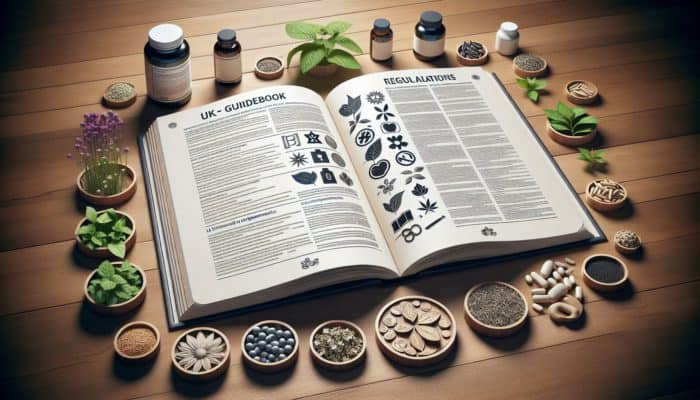
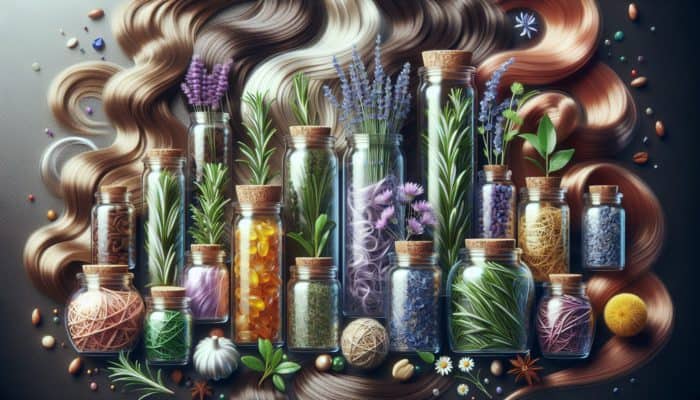


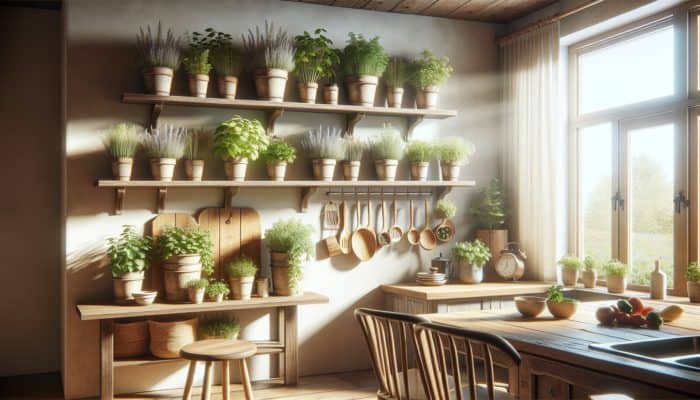
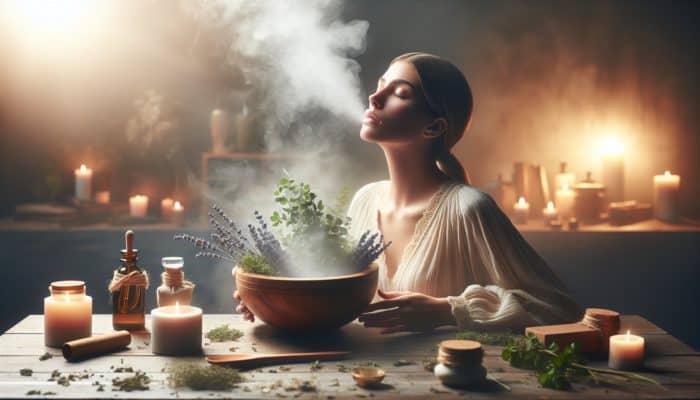


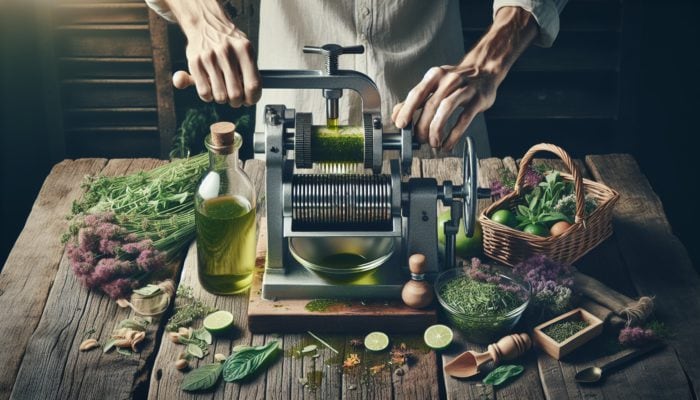

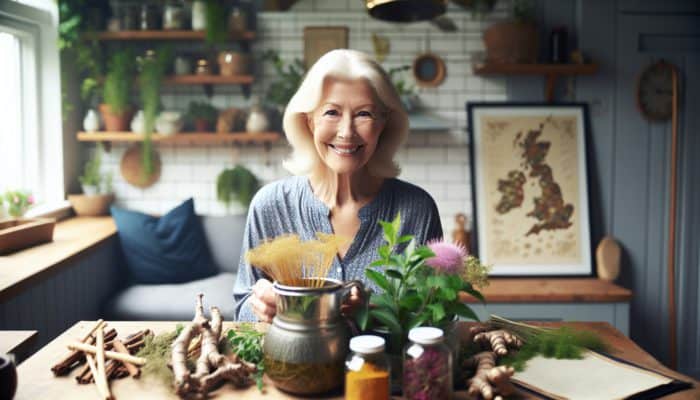

5 Comments
I appreciate the thoughtful insights you’ve shared about selecting the right herbs for aromatherapy. It’s quite fascinating how something as seemingly simple as herbs can hold such profound effects on our mental and physical well-being. Your examples of lavender and peppermint beautifully illustrate this connection. I often find myself gravitating towards other herbs as well, especially chamomile. The soft, apple-like aroma has an undeniably calming effect, similar to lavender, but I think it also brings a comforting warmth that feels particularly nurturing during stressful times.
I really appreciate your insights on choosing the right herbs for aromatherapy. I’ve found that the world of herbs can be overwhelming, given the vast array of options and their unique properties. Your mention of lavender and peppermint really resonates with me; those are two staples I often find myself turning to.
Your exploration of how to select the perfect herbs for aromatherapy highlights the intricate relationship between herbal characteristics and our emotional and physical states. I have always found this connection fascinating, particularly in how different herbs not only influence our mood but also reflect cultural practices around wellness.
I really appreciate how you’ve unpacked the importance of selecting the right herbs for aromatherapy. It’s fascinating how each herb can serve different purposes, and I’ve found that even my own experiences back this up. For instance, I’ve been on a journey trying to tackle my sleep issues, and after experimenting with lavender, it’s become my go-to. The scent feels like a warm hug at the end of a long day.
Your insights on herb selection in aromatherapy are quite thought-provoking. It’s fascinating to observe how individual responses to herbs can vary so widely. For instance, while many find lavender calming, I have read about others who feel more alert or uneasy with its scent. This reinforces the idea that personal experience and individual chemistry must be considered when choosing herbs for aromatherapy.